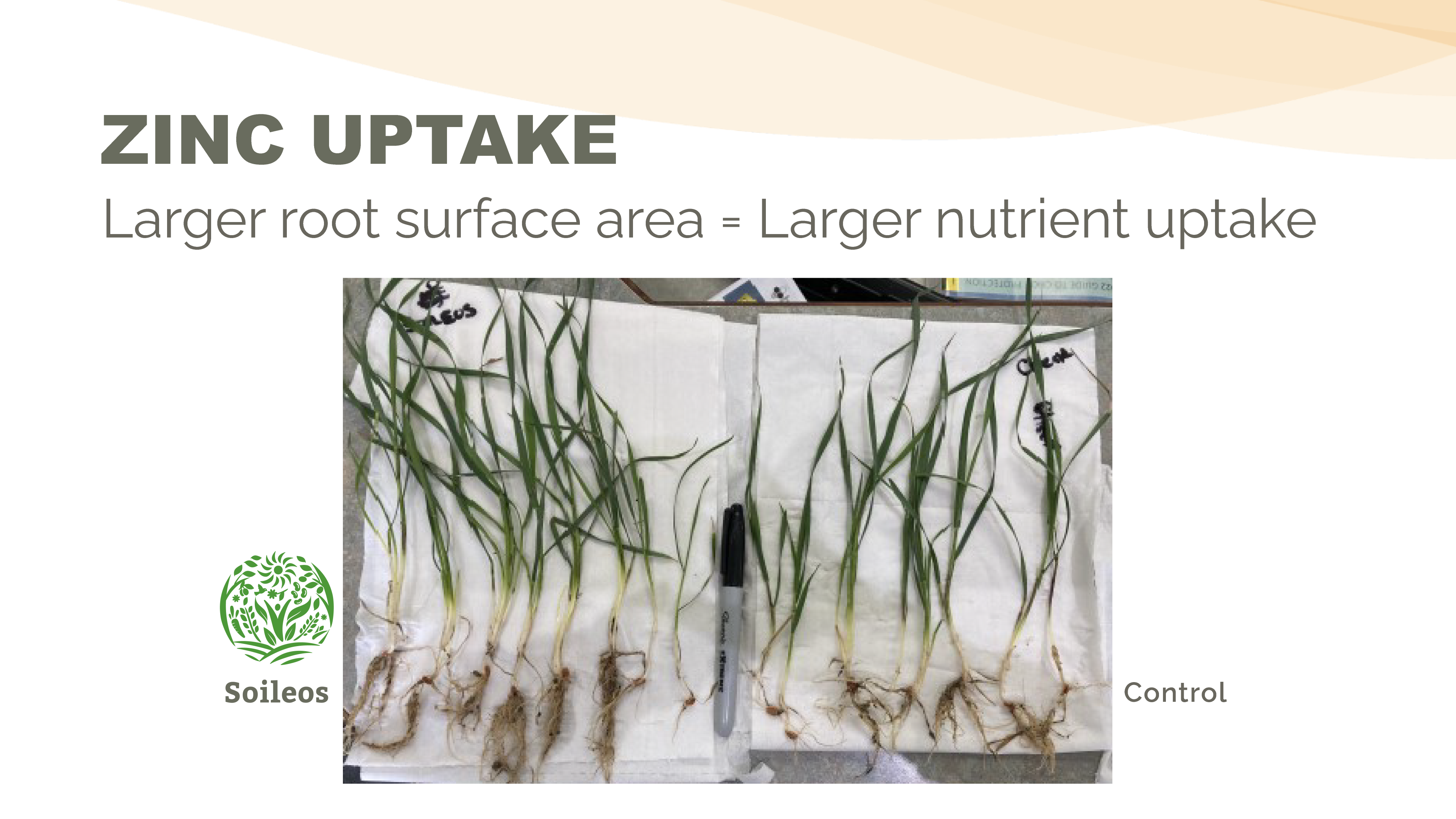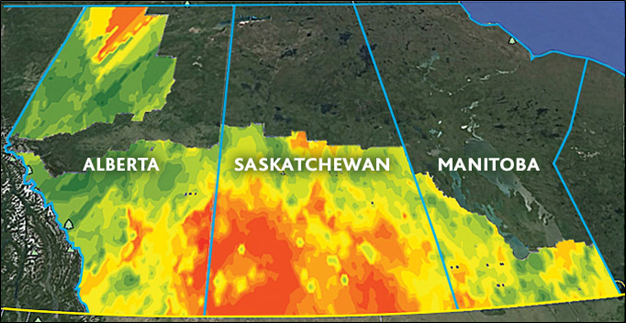Welcome to the final installment of our Sow, Grow, Know series, where we have explored the transformative power of Soileos, the innovative bioactive fertilizer. Today, we conclude this enlightening journey by delving into Soileos' role as a climate-positive solution for micronutrient deficiencies. Join us as we highlight the groundbreaking mode of action of Soileos, its impact on plant growth and yield, carbon sequestration, and the productivity of agricultural practices.
Soil micronutrient deficiencies pose a global challenge and significantly affect human health. The insufficient intake of vital nutrients, like zinc, through crops with limited nutritional value has created an urgent demand for sustainable solutions. Surprisingly, more than two billion people worldwide are currently at risk of zinc deficiency disorder, especially in developing nations where cereals serve as a staple food and access to meat is limited.1 2
Climate change has further complicated the interactions between the soil microbiome and plants, impacting their community structure, function, and overall well-being. 3 4 5 Agricultural soils rely on healthy microbiomes for high productivity and crop quality. Soil ecosystems harbour immense biological diversity, representing 60% of the Earth's biomass.6
Zinc deficiency is a prevalent constraint in agroecosystems, significantly limiting crop production across various regions. Soil samples from western Canada have revealed significant zinc deficiencies, with high percentages of deficient samples in Alberta (30%), Saskatchewan (66%), and Manitoba (61%).7 Zinc is crucial for plant growth, playing essential roles in DNA replication, gene expression regulation, germination, chlorophyll production, pollen function, fertilization,8 and biomass production.9
Soil becomes zinc deficient when crop removal exceeds zinc availability and fertilization. Soil characteristics like high pH or low organic matter content can limit zinc availability or plant uptake. Additionally, zinc's immobility in the soil makes it reliant on dissolution and movement with groundwater to reach plant roots.
Addressing these micronutrient deficiencies is critical for improving crop productivity and human health. Soileos, with its unique formulation and mode of action, offers a solution to these challenges. By providing a balanced blend of essential nutrients and nurturing the soil microbiome, Soileos ensures the bioavailability of nutrients for plants. This innovative approach optimizes nutrient uptake, enhances crop yields, and contributes to overall health and sustainability of agricultural systems.

With Soileos, farmers and growers can tackle zinc deficiencies and other micronutrient constraints, fostering a more resilient and nourishing agricultural landscape. Soileos plays a crucial role in promoting sustainable farming practices and addressing global micronutrient deficiencies by bridging the gap between soil health and human nutrition.
But what truly distinguishes Soileos is the gradual release of nutrients through the action of soil microbes. As the soil microbes break down the cellulose-bound nutrients, they are released into the soil and transported directly to the plant roots. This bioactive delivery system mimics natural nutrient cycling, providing a consistent supply of nutrients to support plant growth and development. (Watch how Soileos works here)
The benefits of Soileos extend beyond crop yields. By nourishing the microbial community in the soil, Soileos promotes soil health and fertility. This fosters a more resilient soil ecosystem, enhancing nutrient cycling and promoting carbon sequestration. The cellulose fibres derived from crop residues are crucial in capturing and storing carbon, contributing to the fight against climate change.
Real-world examples and case studies further demonstrate the impact of Soileos on agricultural practices. Growers incorporating Soileos into their farming systems have witnessed increased crop yields, improved soil structure, and reduced environmental impact. Soileos has proven effective across diverse agricultural landscapes, from small-scale operations to large commercial farms. You can check out our trial data here.
In conclusion, Soileos is an innovative bioactive fertilizer that offers a climate-positive solution to address global micronutrient deficiencies. By nurturing the soil microbiome and providing a gradual release of essential nutrients, it enhances crop yields, fosters soil health, and promotes carbon sequestration. Soileos is a valuable tool that supports sustainable farming practices, bridging the gap between soil health and human nutrition and contributing to a resilient agricultural landscape. Adopting Soileos is a step towards a healthier, more sustainable, and climate-positive world.
- World Health Organization (WHO), Food and Agriculture Organization (FAO), International
Atomic Energy Association (IAEA), 2002. 2nd ed. World Health Organization, Geneva. - Stein, A. J. (2009). Global impacts of human mineral malnutrition. Plant and Soil, 335(1-2),
133- 154. doi:10.1007/s11104-009-0228-2 -
Abhilash, P. C., Dubey, R. K., Tripathi, V., Srivastava, P., Verma, J. P., & Singh, H. B. (2013). Challenges and perspectives include remediation and management of POPs-contaminated soils in a warming climate. Environmental Science and Pollution Research, 20(8), 5879– 5885. doi:10.1007/s11356-013-1808-5
-
Tripathi, V., Fraceto, L. F., & Abhilash, P. C. (2015). Sustainable clean-up technologies for soils contaminated with pollutants: Plant-microbe-pollutant and climate nexus. Ecological Engineering, 82, 330–335. doi:10.1016/j.ecoleng.2015.05.027
-
Bojko, O., & Kabala, C. (2017). Organic carbon pools in mountain soils — Sources of variability and predicted changes in relation to climate and land-use changes. CATENA, 149, 209–220. doi:10.1016/j.catena.2016.09.022
-
Dubey, A., Malla, M. A., Khan, F., Chowdhary, K., Yadav, S., Kumar, A., . . . Khan, M. L. (2019). Soil microbiome: A key player for conservation of soil health under changing climate. Biodiversity and Conservation, 28(8-9), 2405-2429. doi:10.1007/s10531-019-01760-5
- Murrell, T. Scott & Williams, Ryan & Fixen, Paul & Bruulsema, Tom & Williams, Elle. (2016).
2015 North American Soil Test Summary. - Pandey, N., Pathak, G. C., & Sharma, C. P. (2006). Zinc is critically required for pollen
function and fertilization in lentil. Journal of Trace Elements in Medicine and Biology, 20(2),
89-96. doi:10.1016/j.jtemb.2005.09.006 - Kaya, C., & Higgs, D. (2002). Response of tomato (Lycopersicon esculentum l.) cultivars to
foliar application of zinc when grown in sand culture at low zinc. Scientia Horticulturae,
93(1), 53-64. doi:10.1016/s0304-4238(01)00310-7

